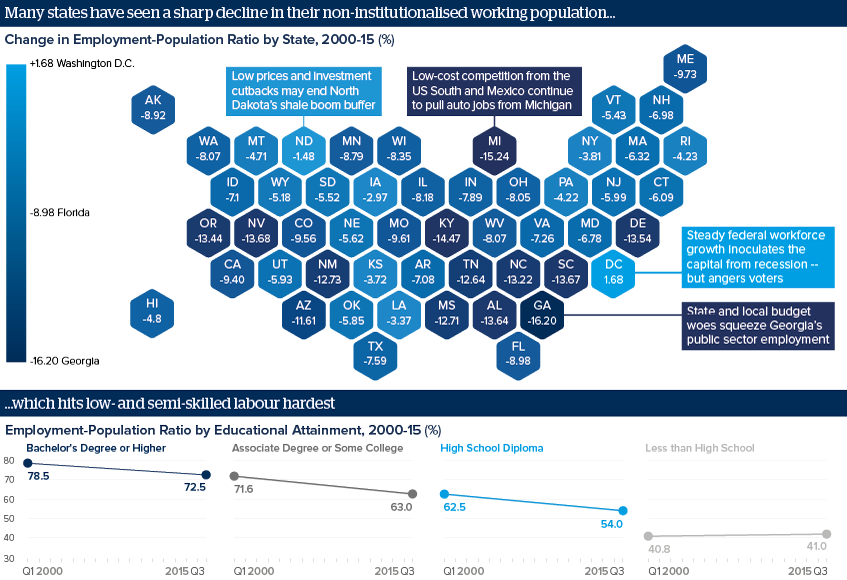US recovery masks weak state-level employment outlook
Despite top-line improvements in the US labour market, acute geographical inequalities persist

Source: US Census Bureau, US Bureau of Labor Statistics, Oxford Analytica
Outlook
Although the Fed's December 16 decision to raise interest rates was predicated in part on improvements in the US labour market, many states and localities have seen a significant deterioration in their employed population over the past 15 years.
The knock-on effects of this decline in the working population are manifold, ranging from an affordable-housing gap in many cities to increased numbers of alcohol- and opioid-abuse-related deaths.
In light of Washington gridlock, state and local governments -- dependent on a confined tax base -- will face competing demands for increased public services in situations of acute inequality, but declining ability -- and political will -- to finance them.
Impacts
- Historical aversion to free trade agreements will encourage manufacturing state representatives to oppose TPP.
- Federal criminal justice reform will seek to lower the economic and social costs of mass incarceration.
- Undiversified oil, gas and coal states will face job cuts as energy prices remain low.
- Economic anxieties boost anti-establishment politics in party primaries and Congress.
See also
- Prospects for the US economy in 2016 - Nov 6, 2015
- More graphic analysis